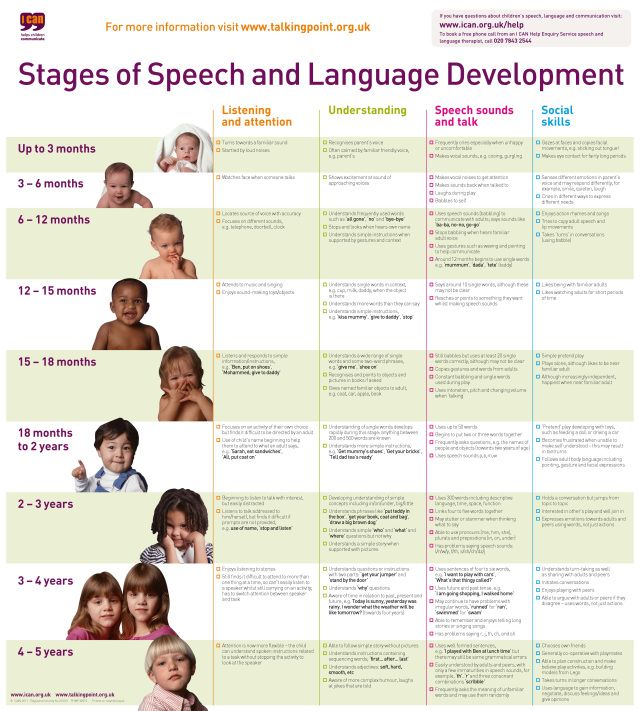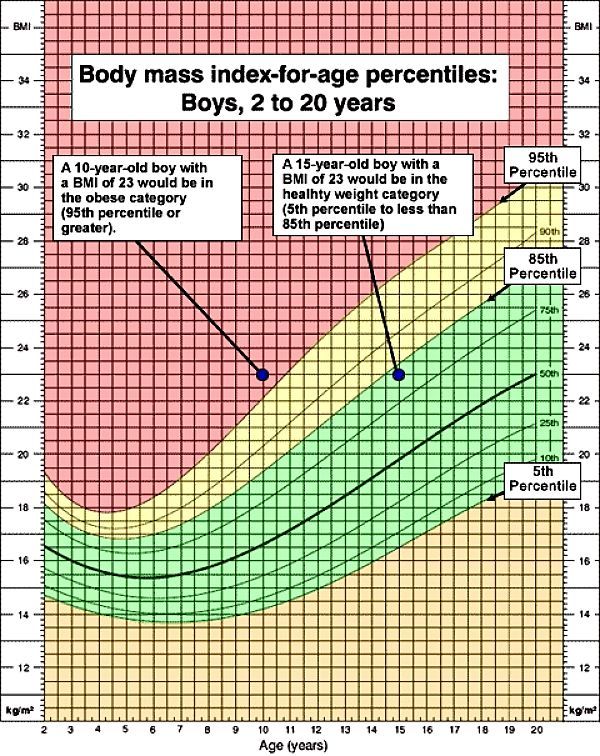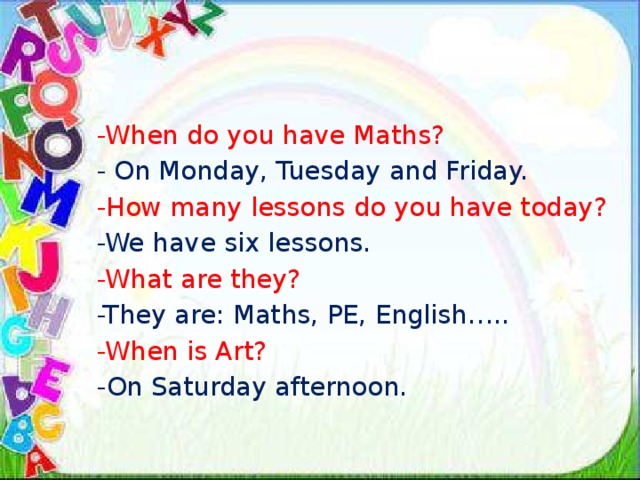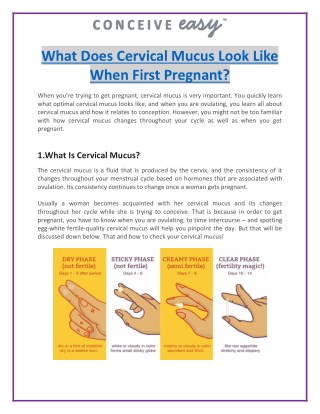Four months old
Your baby's developmental milestones at 4 months
Explainer
Everything you need to know about your growing 4-month-old.
UNICEF
Your little one is growing more social and moving more purposefully. Babies at this age love to babble, coo, play and mimic the sounds they hear and movements they see. You’ll start to notice that her/his cries will start to sound different as she/he learns to communicate hunger, frustration, discomfort and sleepiness. Read on to find out more about some of the ways your 4-month-old is learning and changing at this stage.
| Social and emotional |
| Language and communication |
| Brain development |
| Movement and physical development |
| Food and nutrition |
| Things to look out for |
| Tips and resources |
| < Back to Parenting Milestones |
Social and emotional milestones at 4 months
Some of the ways you’ll see your little one learning to connect with the people around her at 4 months:
- Will smile spontaneously.
- Will try copying your movements and facial expressions.
- Likes to play with others and may get upset when playtime stops.
Tips for parents
- Share your little one’s interest by looking and pointing.
- Try smiling at your baby and speaking to her in a kind voice.
Language and communication milestones at 4 months
How your baby is expressing his needs:
- Cries will start to sound different if he is hungry, in pain or tired.
- He will babble and copy sounds he hears.
Tips for parents
- When your baby cries, respond as soon as possible, noting the meanings of each cry-signal.
- Repeat sounds your baby makes back to him.
Brain development milestones at 4 months
How your child’s brain is growing:
- Will begin to recognize objects and people she is familiar with from a distance.

- Is responsive to love and affection.
- Will track moving objects with her eyes by following them side to side.
- Her hands and eyes will work together.
- She will let you know if she’s happy or sad.
- Watches faces closely.
- Will reach for toys with one hand.
Tips for parents
- Help her develop her hand-eye coordination by leaving toys nearby.
- Speak to your baby during your everyday routines and talk to her about what you notice.
Movement and physical development milestones at 4 months
How he’ll move through his environment:
- Brings his hands to his mouth.
- Will push up to his elbows when lying on his stomach.
- He can hold his head up without support.
- Might be able to roll over onto his back.
- He will push down on his legs when his feet are on a hard surface.
- Can shake a toy he’s holding.

Tips for parents
- Leave rattles near your little one so he can reach for and shake them.
- Encourage your baby to roll over by putting him on a hard surface — soft surfaces will be difficult at this stage.
Food and nutrition milestones at 4 months
What mealtimes look like at 4 months:
- Your baby will begin to signal that she is hungry by putting her hands near her mouth.
Tips for parents
- When she signals that she is hungry, respond with giving her breastmilk.
Things to look out for
While all babies develop differently, you should speak to your paediatrician if your 4-month-old:
- Has difficulty moving one or both of his eyes in any direction.
- Won’t smile at people.
- Doesn’t bring his hands to his mouth.
- Won’t push down with his legs when he’s put on a hard surface.

- Doesn’t make noises or cooing sounds.
- Can't hold his head up steadily.
True or false?
Loading...
Explore age groups
2 Months | 4 Months | 6 Months | 9 Months | 1 Year | 18 Months | 2 Years
< Back to Parenting Milestones
4-Month-Old Baby: Milestones, Growth, and Sleep
Your 4-month-old baby is more alert, active, and engaging than ever. Enjoy this time as you find out more about their unique personality and watch them build the strength and skills they need for exciting feats like sitting, reaching, and rolling!
Baby Development MilestonesNow that you have a 4-month-old baby you may find life slightly less hectic as you work with some established daily routines. But that little one is probably keeping you on your toes, and that's to be expected! Now, and for the next few months, they will be busy honing their newfound motor skills and will eventually be fully able to grasp things, roll over, and sit up on their own.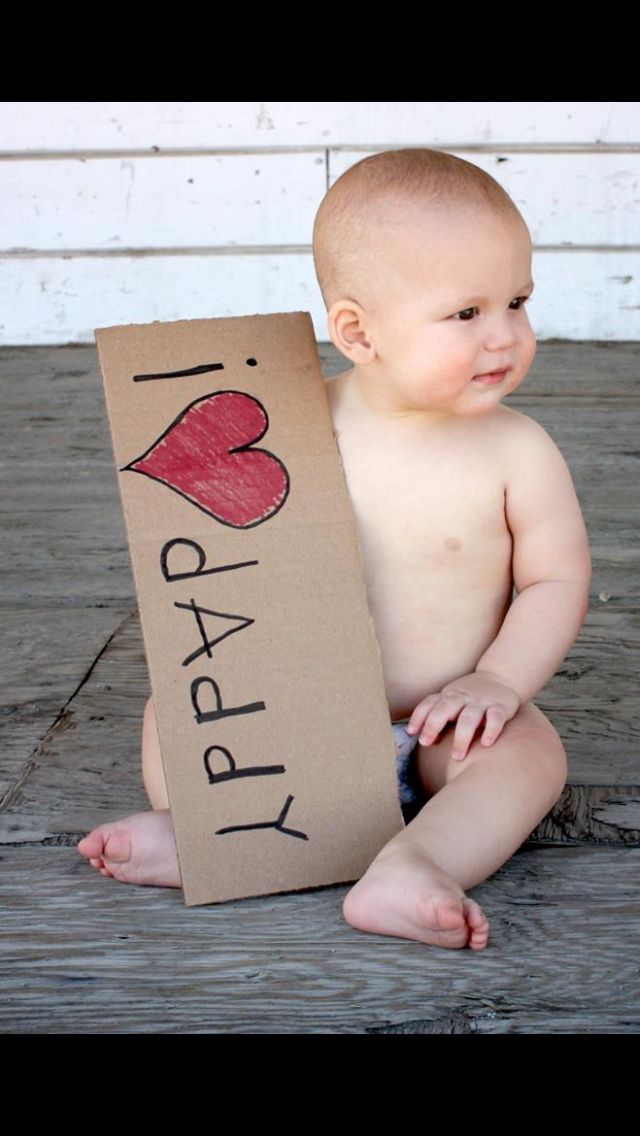 The best is yet to come: Read on to find out more about what to look forward to this month.
The best is yet to come: Read on to find out more about what to look forward to this month.
Your 4-month-old baby is probably continuing their fast pace of growth (about 1 to 1 1/4 pounds per month) but remember that a steady rate of growth is more important than any specific gains in weight or length.
You may want to learn more about how your baby’s healthcare provider will use baby growth charts to track your baby's growth. With the help of these charts, your baby’s provider will assess whether your 4-month-old baby is on track and within the average range of growth by length and weight.
There's a lot of cognitive and physical development taking place now, and you’re probably about to start seeing more deliberate actions from your baby as they learn concepts like cause and effect.
Senses: Developing Distance Vision and LanguageThe world around your baby is coming into focus, literally, as their distance vision steadily improves.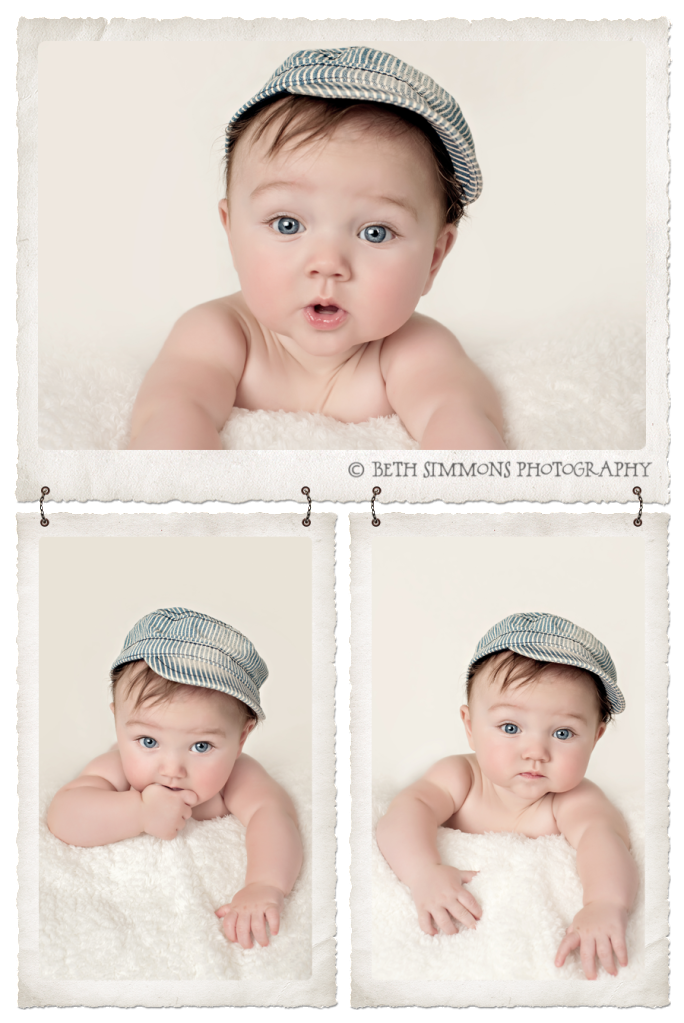 They may start to recognize you and other familiar faces at a distance, and they can easily follow moving objects with their eyes. Their color vision is also improving, and you may notice that they seem to favor shades of red and blue.
They may start to recognize you and other familiar faces at a distance, and they can easily follow moving objects with their eyes. Their color vision is also improving, and you may notice that they seem to favor shades of red and blue.
How far can your 4-month-old baby see? By this age your baby’s visual range has increased to several yards or even more, and it will continue to improve in the following months, along with their ability to visually track fast-moving objects like a ball rolling across the floor. As your baby’s hand-eye coordination improves, they’ll start reaching for toys and may be able to grab those moving objects. Don’t worry if your baby’s not reaching for toys at 4 months old, as this development may come later in some babies.
Another source of endless visual fascination for your 4-month-old baby? Themselves! An unbreakable mirror is a great toy for infants this age, as they can see a wide range of colors and shapes as well as their own movements in their reflection.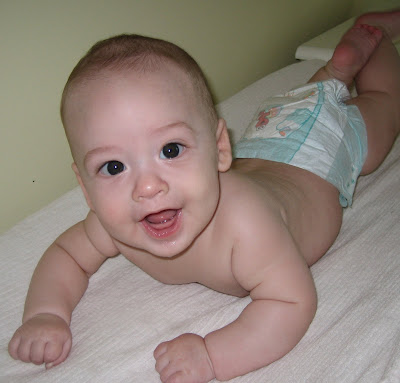
It’s not only your baby’s sense of sight that’s maturing, but also their language skills, thanks to improved hearing and cognitive development. They may be able to mimic some of the rhythms, tones, and patterns of some of the words you speak to them, and their cries may sound different based on their various needs. It may sound like baby babble now, but they’re building a solid foundation for later speech. Find out more about when your baby may start talking.
Movement: Almost on a RollFour-month-old baby movement developmental milestones are all about muscle control and hand-eye coordination. If you notice more and more objects making their way into your little one's mouth, that's because with their vision improving, they’re able to do this more successfully. Be careful of what’s within their reach. They can probably grab and shake toys and rattles now and may soon be able to pass objects from one hand to another.
Your little one is almost on the move! They’re still working on strengthening their back and chest muscles, and they’re also working on holding their head up while on their tummy.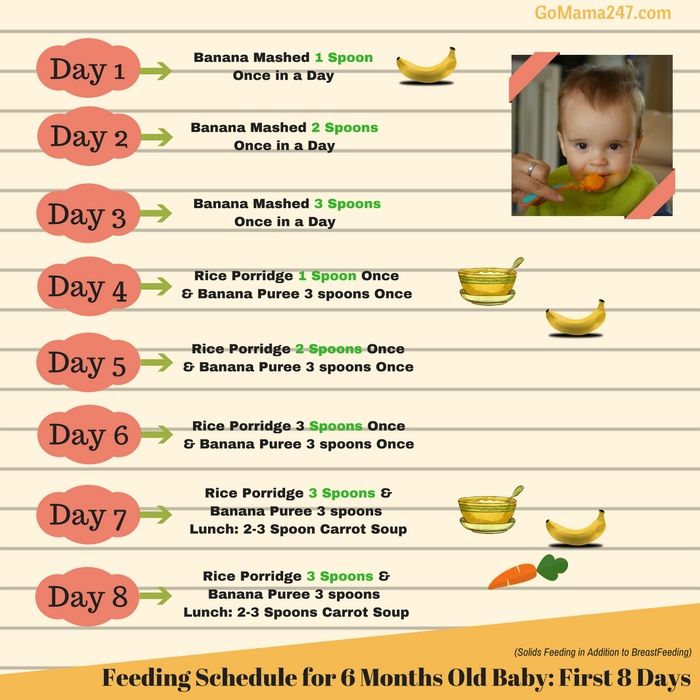 Before long they’ll have the body strength to roll over from one side to the other.
Before long they’ll have the body strength to roll over from one side to the other.
To summarize, your baby may be doing some of the following at this point:
Holding their head up independently
Bringing their hands to their mouth
Sitting up with support
Reaching for and grabbing objects of interest.
related baby tool
Keep an eye on your baby’s average growth by tracking height, weight, and head circumference with our simple tool.
Fill out your baby's details*:
What is your child*
Boy Girl
This is a mandatory field.
Age (between 0 and 24 months)
This is a mandatory field.
Weight (lbs.)
This is a mandatory field.
Height (in.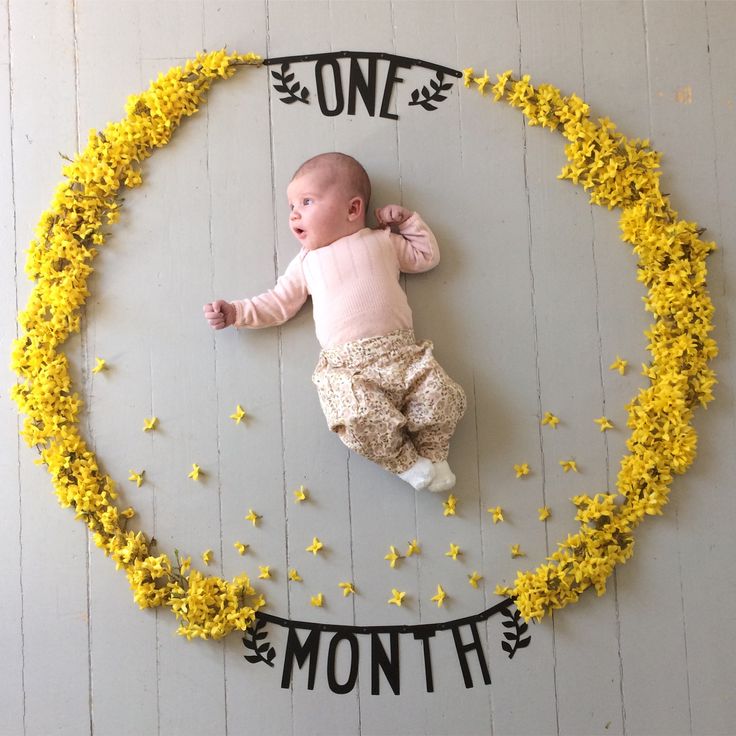 )
)
This is a mandatory field.
Head circumference (in.)
This is a mandatory field.
*Input details of your baby’s last measurements. **Source: World Health Organization
Personality: Getting to Know Your Little One
At 4 months old, your baby’s increased mobility and cognitive awareness make them even more curious about the world around them. They'll also likely become more sensitive to your tone of voice. Your soft, gentle voice soothes and reassures them, whereas a harsher, angrier tone will let them know something is wrong. And they’re also likely to imitate your tone in their coos and babbles. They may be able to mimic certain sounds or syllables long before they’re able to form real words.
But what if your baby doesn't seem to be so easygoing or inquisitive? That's OK, too. Sometimes babies who seem to be shy need more comfort and attention from their caregivers.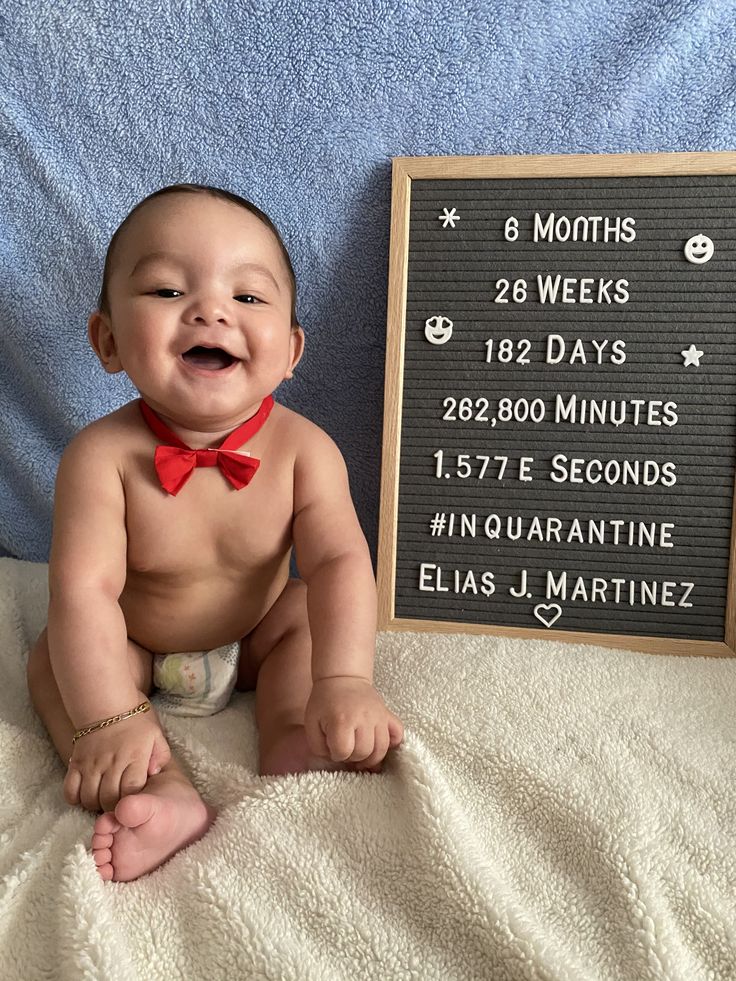 Watch to see if your baby seems overwhelmed, overstimulated, or withdrawn in certain situations, and give them time to get comfortable with any new faces or new activities in their life.
Watch to see if your baby seems overwhelmed, overstimulated, or withdrawn in certain situations, and give them time to get comfortable with any new faces or new activities in their life.
What “should” a 4-month-old be doing? Here are some fun activities and things to do with your 4-month-old that can help foster your baby's development:
To encourage visual development
Hang a colorful mobile over your baby’s crib, making sure it is safely beyond their reach.
Let them marvel at their image and movements in a mirror.
Play peekaboo, which helps them learn about object permanence. They love seeing your face appear and reappear!
To promote muscle strength and motor control
Do tummy time. Lifting their head and chest while on their tummy (with you close at hand) will strengthen those muscles needed for rolling over and sitting.

Practice sitting. As you support them in this position, they have a better range of motion to reach for and grab objects.
Practice standing. While holding your baby under their arms, pull them into a standing position to help them work those leg muscles.
To aid language development.
Talk, read, and sing to your baby.
Mimic their sounds.
Respond positively when they mimic yours.
At 4 months old, your baby is still getting all their nutritional needs met from breast milk, formula, or a combination of the two. The best way to know when it’s time to for a feeding is to observe your baby for signs of hunger. These clues can include your baby
licking their lips
sticking their tongue out
acting fussy
sucking on their knuckles.
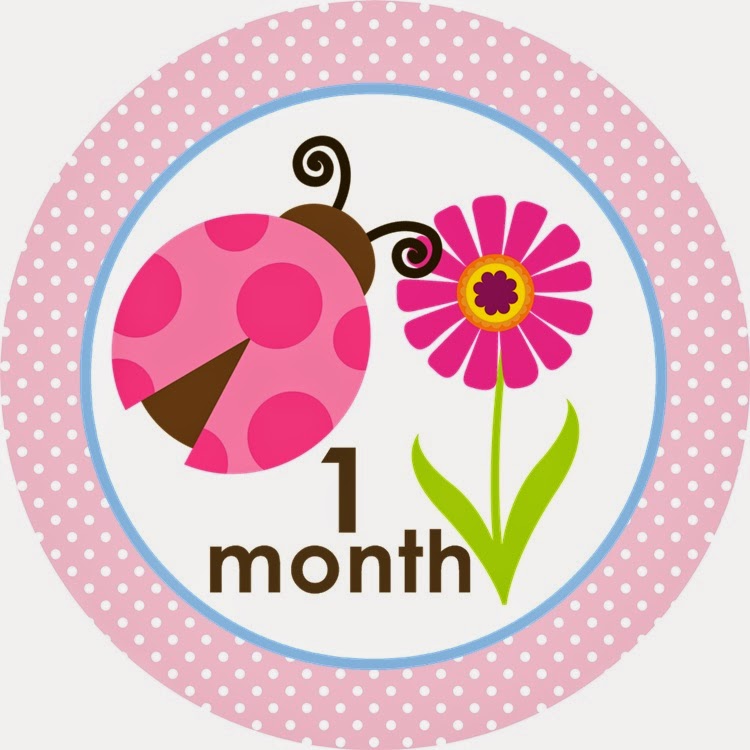
How often does a 4-month-old baby eat? As a general guideline, a 4-month-old baby’s feeding schedule could consist of about four to six ounces of breast milk or formula every three to five hours. You'll still want to track wet and dirty diapers as well as stool frequency and consistency to make sure your baby is getting enough to eat. Your healthcare provider will also check that your baby is eating enough by tracking their growth over time.
One thing won’t change for a while yet: Your baby will need lots and lots of comfy diapers. Download the Pampers Club app, if you haven't already, to get rewards and discounts on all those diapers.
How Much Sleep Does a 4-Month-Old Baby Need?So, how much “should” a 4-month-old sleep? When it comes to your baby’s nap/sleep schedule, on average a 4-month-old baby needs between 12 and 16 hours of sleep every day. This may mean two daytime naps (morning and afternoon for three to four hours each) and a longer stretch of sleep at night.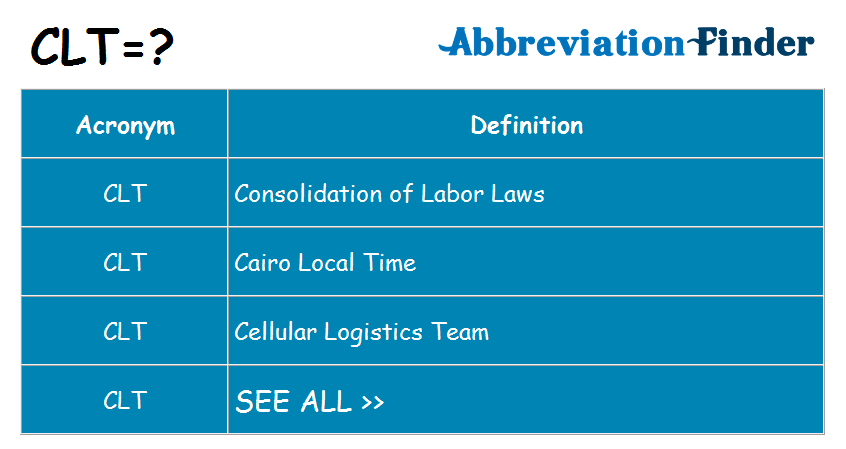
Now that your baby is more active and alert during the day, winding down in the evening can be more of a challenge. Stick to a bedtime routine; you may find that a warm bath, gentle massage, rocking, or feeding may be just what they need to help them fall asleep.
If your 4-month-old baby’s struggling to sleep or not sleeping well, check out the Smart Sleep Coach app by Pampers. Cocreated by pediatricians and sleep experts, this easy-to-use app includes advice to help you understand your baby’s sleep, a sleep tracker that automatically recommends bedtimes, and expert guidance to help you navigate sleep challenges.
A Day in the Life of Your 4-Month-Old BabyYour baby's budding curiosity and alertness make every day special, and you're probably feeling more at ease as a parent as you get comfortable sharing some simple routines with your little one. Here is an example of a daily schedule for a 4-month-old:
Your Baby's HealthIf your baby is coughing or has other symptoms, such as fever, it's worth knowing about several health conditions and illnesses that might crop up at this stage, and when to reach out to the healthcare provider:
Fever.
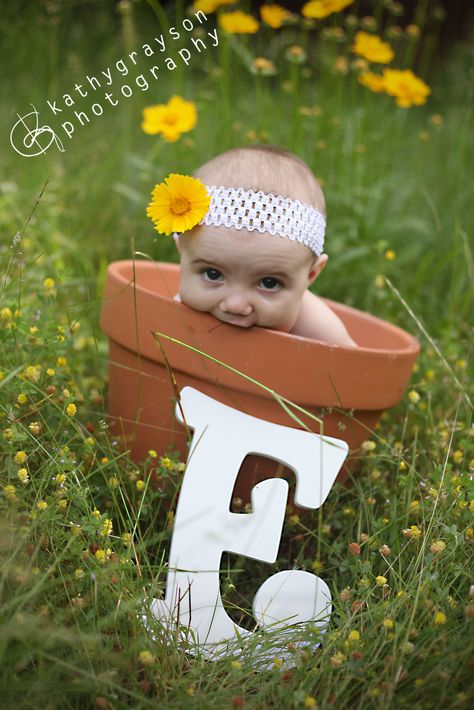 A fever usually indicates illness. In infants, a rectal temperature of 100.4 degrees Fahrenheit and higher is considered a fever and may mean your little one is fighting an infection. A fever can indicate many different types of infection such as a cold, flu, ear infection, or even pneumonia, so it's best to call your baby’s healthcare provider for advice and to watch for other symptoms of illness. To take your baby's temperature accurately, use a digital thermometer and measure the temperature in the rectum. Gently insert the device no more than 1/2 to 1 inch and wait until it beeps or lights up to give you an accurate reading.
A fever usually indicates illness. In infants, a rectal temperature of 100.4 degrees Fahrenheit and higher is considered a fever and may mean your little one is fighting an infection. A fever can indicate many different types of infection such as a cold, flu, ear infection, or even pneumonia, so it's best to call your baby’s healthcare provider for advice and to watch for other symptoms of illness. To take your baby's temperature accurately, use a digital thermometer and measure the temperature in the rectum. Gently insert the device no more than 1/2 to 1 inch and wait until it beeps or lights up to give you an accurate reading.Colds and common illnesses. Also known as an upper respiratory infection, a cold is caused by a virus. Colds are very common (most children will have 8 to 10 colds in their first two years) and highly contagious. Take precautions if your baby is in child care or if you have older, school-aged children at home. You're probably familiar with some of the most obvious signs of a cold, including a runny nose, sneezing, mild fever, cough, low appetite, and sore throat, but contact your baby’s healthcare provider if your baby shows any of these symptoms:
bluish lips or fingertips
persistent cough (lasting longer than one week)
being extra sleepy or fussy
temperature over 102 degrees Fahrenheit.

Bronchiolitis. Another common viral illness is bronchiolitis, an infection of the small breathing tubes of the lungs. It's highly contagious, so be especially vigilant about hand-washing and other methods of hygiene during the fall and winter months when infections are likely to spread. Contact your baby’s healthcare provider right away if your baby
wheezes when breathing
can't drink fluids
has bluish lips or fingertips
shows symptoms of dehydration.
This month, follow these tips and take advantage of these opportunities to nurture your 4-month-old baby’s development as well as strengthen your parent-child bond:
Be in sync with your baby’s rhythm and mood. Whether your baby is happy or sad, attend to their needs. Responding to your baby’s cues won’t spoil them.
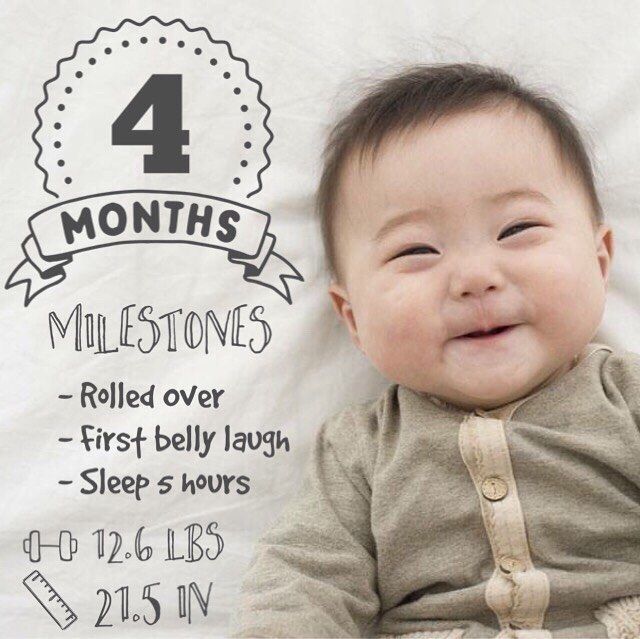
Encourage your child to reach for safe objects. Show them a wooden spoon, a block, or a soft plush toy and wait for them to reach for it and grab it, which helps develop their fine motor skills.
Engage with your baby. If your baby makes a funny sound, mimic them. When holding your baby, communicate with them face to face and have a “conversation” even if the words exchanged don’t mean much just yet.
Move with your baby. While holding them, dance around, move in a steady rhythm, or just sway.
Introduce your baby to their community. Allow your baby to meet other parents and their children. Pay attention to your baby’s cues in case they’re overstimulated or may not be ready to meet people just yet.
Here is a list of some baby gear items that may come in handy this month:
Play mat or activity gym.
 Make tummy time more enjoyable by using a play mat or activity gym with your little one.
Make tummy time more enjoyable by using a play mat or activity gym with your little one.Baby toys. Age-appropriate toys such as a small unbreakable mirror or a colorful mobile can be fun for your little one and can encourage overall development.
Baby books. When you read to your baby at bedtime or during the day, you can turn to favorites from your own childhood as well as other time-honored classics and newer titles.
Diapers, wipes, and diaper rash cream. Make sure you don't run out of diapers and wipes, and that you have diaper rash cream on hand.
Humidifier. Ensure your baby sleeps in the most comfortable environment by using a humidifier, which can improve their quality of sleep.
Baby thermometer. Using a thermometer specifically designed for babies makes taking a temperature much easier. Keep one in your first-aid kit.
A new baby brings lots of changes for a family.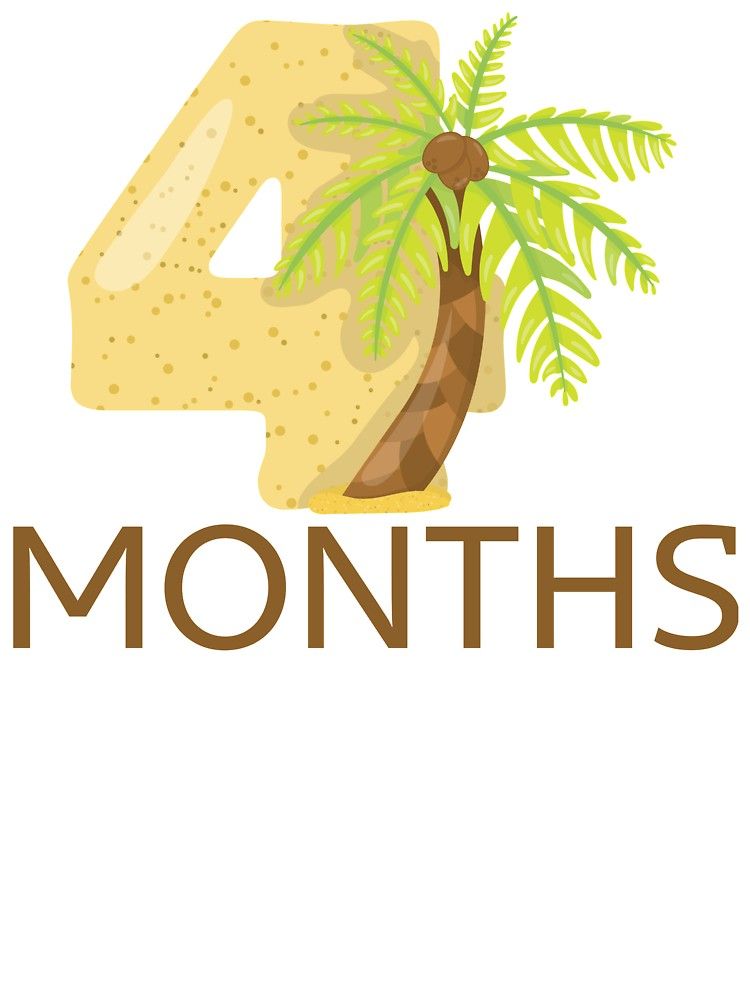 From aunts and uncles to cousins and grandparents, everyone wants to feel included and connected with the newest family member. This is an ideal time to get your loved ones involved in caring for the baby. Set aside special tasks they can do to help you with the baby, such as at mealtime, bath time, or playtime.
From aunts and uncles to cousins and grandparents, everyone wants to feel included and connected with the newest family member. This is an ideal time to get your loved ones involved in caring for the baby. Set aside special tasks they can do to help you with the baby, such as at mealtime, bath time, or playtime.
As a new parent, you'll find it helpful to have your parents, in-laws, or other relatives pitch in with things like cleaning, shopping, and child care for your older kids. It will take some of the pressure off you and help everyone feel like part of the family.
One of the overwhelming parts of becoming a new parent is the torrent of advice you may get from well-meaning relatives or friends and even complete strangers! Learning to handle unwanted advice can be tricky.
Keep in mind that in many cases, there is no one “right way” to raise a child. Pay attention to your child’s cues and try to make decisions based on your child’s unique personality, your beliefs, and your specific circumstances.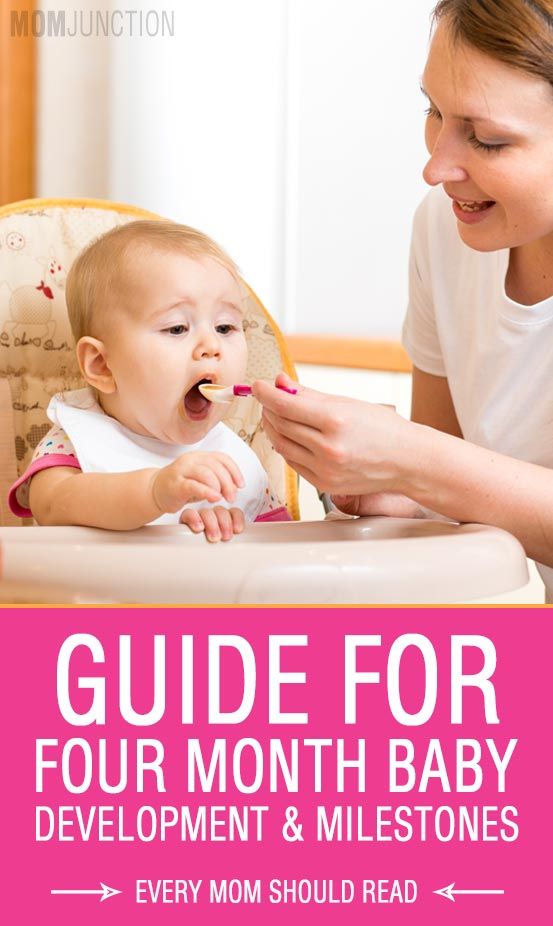 Above all, if you have any questions or concerns, turn to your baby’s healthcare provider for expert advice, or ask trusted loved ones for their insights.
Above all, if you have any questions or concerns, turn to your baby’s healthcare provider for expert advice, or ask trusted loved ones for their insights.
□ Schedule and take your baby to their healthcare provider for the 4-month checkup. Ask the provider about any upcoming immunizations your baby needs. Learn more about the immunization schedule.
□ Before the visit, jot down any questions or concerns you have about your baby's health and well-being. It's important to let the provider know about any illnesses, rashes, fever, vomiting, or developmental issues you've spotted.
□ Curious about what’s coming next? Read our article on development milestones for 5-month-old babies.
□ Your little one is almost 5 months old! Celebrate this special day by downloading and printing these milestone cards to make your family photo shoot even more special.
For even more info, sign up to receive our emails:
What a child should be able to do at 4 months - the development of a baby at 4 months boy
Every month of a baby's life is a whole stage of development. Therefore, what a child should be able to do at 4 months is different from the level that was observed a month earlier. At the same time, medical standards are exemplary. If he still does not know what is written in the charts, this does not mean a lag. Each child has his own program, which will be carried out as he grows and matures.
Therefore, what a child should be able to do at 4 months is different from the level that was observed a month earlier. At the same time, medical standards are exemplary. If he still does not know what is written in the charts, this does not mean a lag. Each child has his own program, which will be carried out as he grows and matures.
What a four-month-old baby can do.
- Head holding and rotation. The baby holds his head well while crawling or lifting his arms. He turns his head to find the source of the sound, or just to look around.
- Elbow raise with long upper body hold. This happens while lying on your stomach. The first attempts to crawl are made.
- Identification of the source of sound, reaction to sound by turning the head. The child reacts to speech, music, etc. nine0008
- Flip from back to side and belly, reverse to back. So it is more convenient for the child to get his favorite toy or move to the right place.
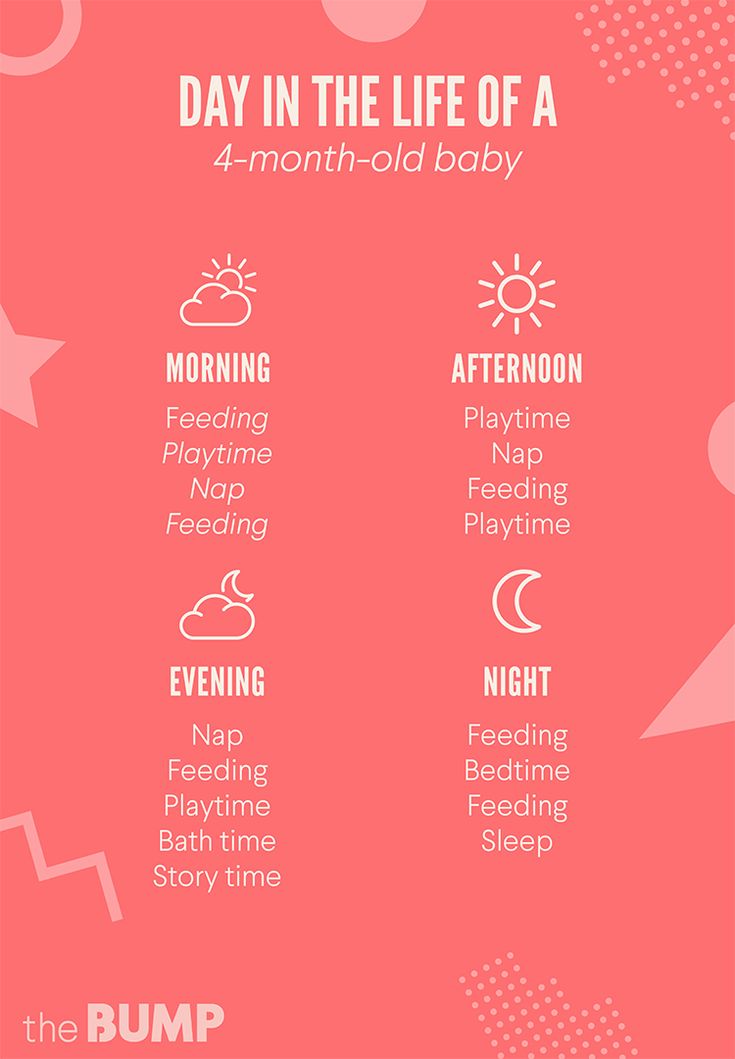
- Capturing and holding rattles for a long time in the hand. Perhaps waving a rattle to extract sounds.
- Attempts to sit up while holding hands. Girls cannot sit at four months, sometimes boys can do it. But the first attempts are made with pleasure. It is impossible to keep the child in this position for a long time - the spine is not ready for stress, and the muscles practically do not hold it. nine0008
- Taste of things. Children at this age put toys and other objects into their mouths. This is not related to the growth of teeth, because it is too early for them. Trying objects helps the child to explore the world. It is important at this time to exclude the presence of small objects near the child: buttons, toy parts, pen caps, etc. A child may accidentally swallow them and suffocate.
- Clapping hands. This action serves as a game and expression of emotions. nine0007 Holding on to a bottle or mother's breast.
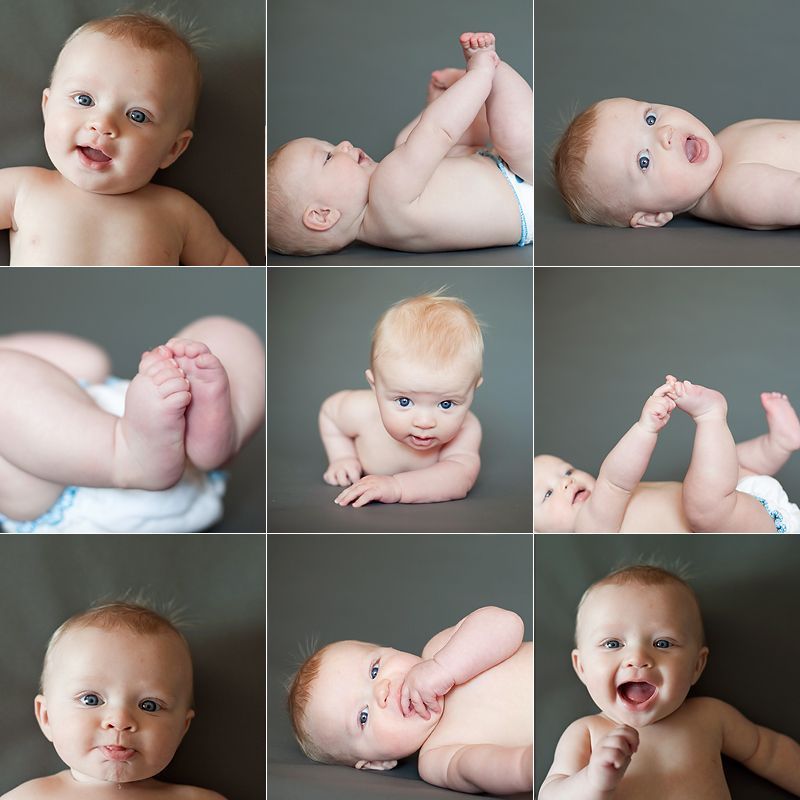 This is necessary for convenience during feeding.
This is necessary for convenience during feeding. The degree of social and emotional development
Every baby at 4 months already smiles and laughs in response to words or pleasant sounds, laughs while playing. He already understands well the meaning of a smile. He likes it when people around him smile, he understands that they have fun with him and that they approve of his behavior.
Leggings for babies
from 590 ₽ 354 ₽
74-92 cm / 6-24 months
Healthy four-month-old babies can walk. These are the first attempts to speak, which manifest themselves in the form of melodic throat sounds. The child listens to them himself.
At the age of four months there is already a reaction to pleasant sounds and music. Most children stop crying and rejoice.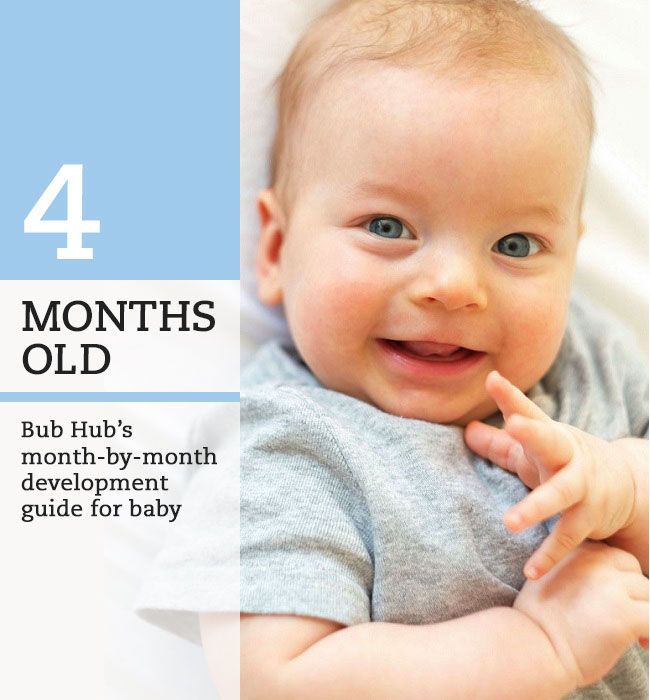 Some walk along singing. This is how joy and pleasure from pleasant sounds are manifested. nine0003
Some walk along singing. This is how joy and pleasure from pleasant sounds are manifested. nine0003
Babies love to be held upright by the armpits. So it is more convenient to look around, it is easier to explore the space. It is better if mom or dad does it. By maintaining contact with parents, a sense of security arises, and the first stay in a new position is tolerated with less shock.
At this age, the child begins to feel his own body in space. Often children spend a lot of time looking at their own hands and feet.
Reflex reactions at 4 months
The reflexes of a newborn child at this age are almost completely lost. Healthy children no longer have the Babkin reflex, proboscis, search, protective, grasping reflex. The simplest unconscious actions at this time give way to more complex reactions and behavioral complexes. This is due to the final maturation of the brain.
What reflexes remain
The stepping reflex remains partially - the child can walk when he is held in an upright position, touching the sofa or table with his feet, and slightly tilted forward.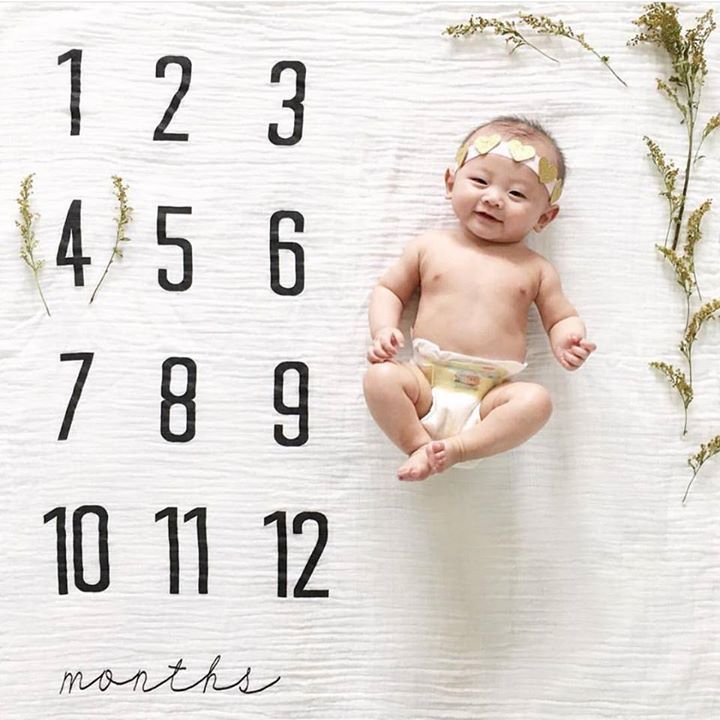 nine0003
nine0003
There may be some manifestation of the startle reflex (Moro). The child is still trying to grab something, frightened by a loud sound, a scream, a blow to the surface on which he lies, or the removal of the hand supporting him. However, if this skill and the stepping reflex are no longer there, this is also not considered a pathology.
In the first six months, the gag reflex is clearly visible - automatic ejection of objects from the mouth. For some children, this even makes the process of first feeding difficult. These reflexes, like the sucking reflex, remain in a person for life. nine0003
Skill development activities
To develop your baby's skills, you don't need any special knowledge. Enough daily communication and tactile contact. It is desirable to do massage and gymnastics. First, you need to bend and unbend the baby’s limbs several times, then gently turn it over from the back to the stomach and back several times. Then you can shake the baby on the fitball, attaching it to his stomach.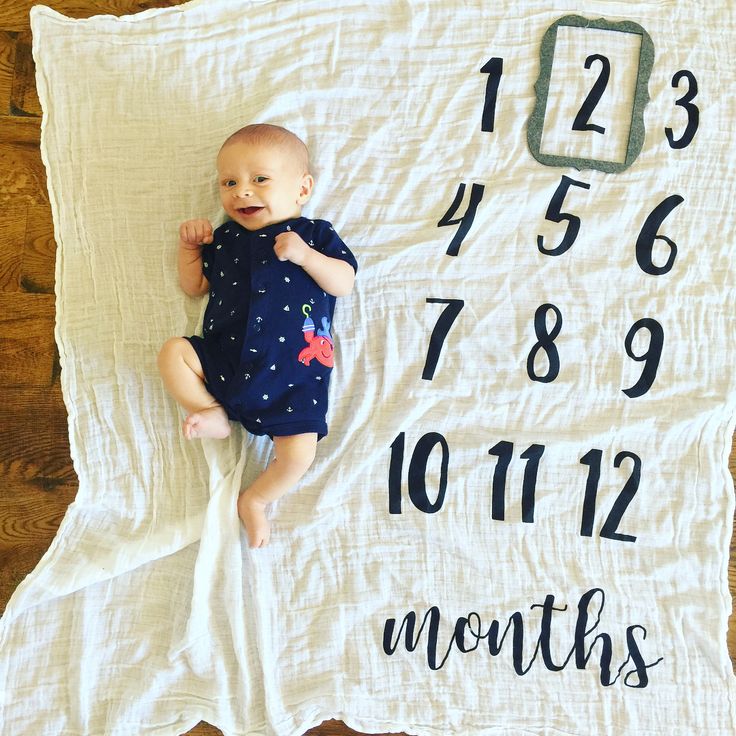 You need to lean forward a little so that he tries to stretch his arms and back so that he tries to grab the ball. nine0003
You need to lean forward a little so that he tries to stretch his arms and back so that he tries to grab the ball. nine0003
Between gymnastics, be sure to take the child in your arms, wear it, stroking the back, arms and legs. Some pediatricians advise using a sling as often as possible, and taking a stroller only in extreme cases.
Massage is a must. It should be smooth touches, stroking along the limbs and back. No rubbing is needed yet.
Other measures also play an important role in the formation of skills.
- New toys. In addition to rattles, teethers are needed, as the baby's gums may already swell. So he will learn to gnaw, which will subsequently make it easier to get used to adult food. It is good to fill a transparent plastic bottle with a mixture of different cereals and small things that will rustle and flicker pleasantly in it. Another technique for learning is filling fabric bags with cereals. Their feeling will teach the child new tactile sensations.
 nine0008
nine0008 - Conducting a dialogue. A child at 4 months is partially able to repeat the speech of an adult: individual sounds, intonations. After listening to his babble, say a few sentences in response, then pause again. So the baby will learn to understand that it is his turn to answer. You need to speak with the child calmly and affectionately, without distorting the words and not "lisping" so that he hears all the sounds. Be sure to address him by his first name. Amuse the child by playing "horned goat", "palmies", etc. nine0007 Hiding games. Hide behind a curtain or blanket, then show up again and say "coo-coo" or "hello." So the child will understand that even when the mother disappears from sight, she will definitely return. This teaches him to trust.
What a four-month-old baby should be able to eat
The main type of nutrition for a child is still mother's milk or an adapted formula. Breastfeeding babies are not yet ready for complementary foods, however, the number of meals is already decreasing, and a food intake regimen is being developed.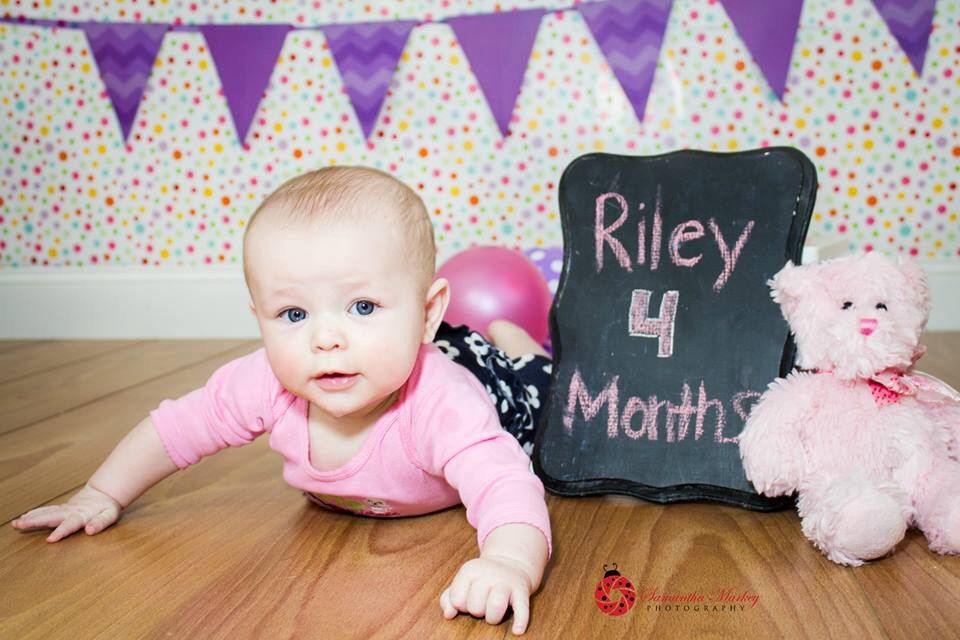 A child consumes 800-9 per day00 gr. breast milk. Water supplementation is required, especially in hot summer weather.
A child consumes 800-9 per day00 gr. breast milk. Water supplementation is required, especially in hot summer weather.
The digestive system of bottle-fed babies is ready for new products. They can be given vegetable purees: broccoli, cauliflower, pumpkin. The recommended dose on the first day is 1 teaspoon, on the second day - 2, etc. After 5-7 days, it is the turn of fruit complementary foods - bananas and apples according to the same scheme. Some mothers, on the advice of doctors, try to give juices, although this should be done with great care. The fact is that juice from sour fruits can cause acidification of the stomach and regurgitation. Sweet juice can discourage children from eating vegetable purees that are less tasty. Therefore, it is necessary to introduce juice into the diet with caution. For the first days it is better to dilute the juice with boiled water 1:1. nine0003
Some children already know how to eat with a spoon. In this case, you can feed the baby with light adapted cereals (buckwheat, rice) and curds. It is best to introduce these products last.
It is best to introduce these products last.
Daily routine of a child at 4 months old
At this age, the routine is almost formed. Mom can correct it, but this should be done gently without stress for the child. Roughly, the schedule looks like this.
| 7.00 nine0003 | Waking up, washing, breakfast. |
| 7.30 | Wakefulness, games in the crib. | nine0097
| 8. | First dream. |
| 9.30 | Feeding and staying awake at home. nine0003 |
| 10.30 | Sleep, you can outside in a stroller. |
| 12.00 | nine0002 Lunch, massage, developing gymnastics.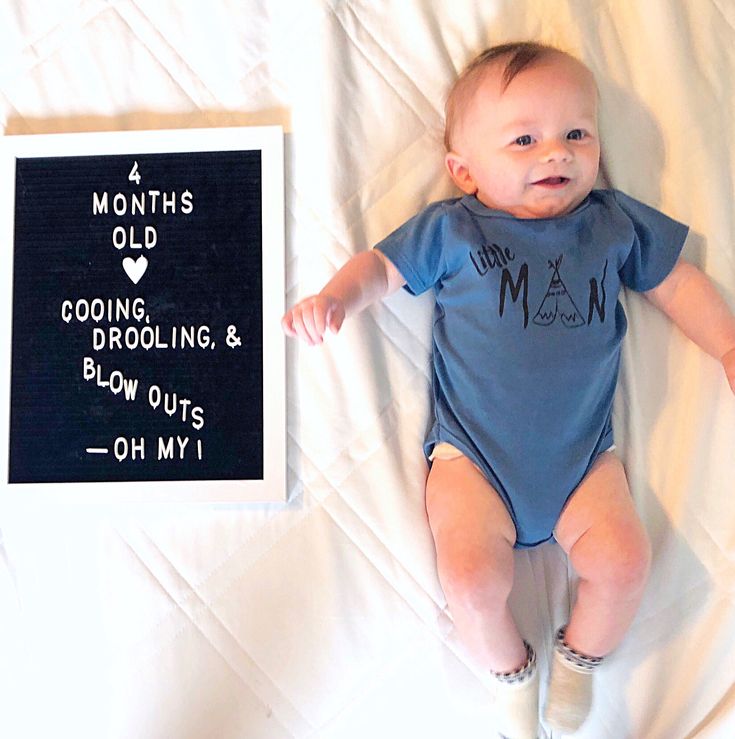 |
| 14.00 | Walk and sleep in a stroller. |
| 16.00 nine0003 | Feeding, listening to music, communicating with adults. |
| 18.00 | Dream. | nine0097
| 19. | Calm communication and quiet games. |
| 20.00 | Bathing, dinner, getting ready for bed. nine0003 |
| 21.00 | Night sleep. |
Deviations from the norm
Each child grows up individually, and a developmental delay of 1.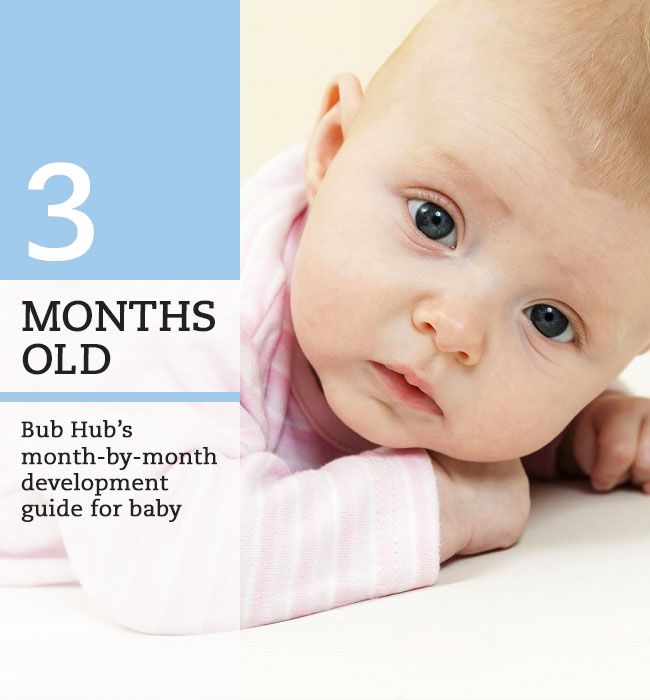 5-2 months is acceptable. Doctors and parents should pay special attention to the child in the following situations. nine0003
5-2 months is acceptable. Doctors and parents should pay special attention to the child in the following situations. nine0003
- No physical activity, the child does not even roll over on his side and does not show interest in movement.
- Baby can't hold his head.
- No hum is observed.
- No response to the name and voice of the mother, no search for the source of the sound.
- The child does not smile, does it rarely or unconsciously, as if for no reason.
- No interest in toys and bright objects in the apartment. nine0008
These deviations indicate a slow development of the child. In such a situation, you need to seek help from specialists. As a rule, the pediatrician himself pays attention to this during a routine examination. If not, contact him additionally and visit a neurologist.
Four-month-old babies often sweat, especially during the heat of summer, which can lead to skin irritation. They need special clothes made from natural raw materials. It is important that the clothes do not constrain movements, do not press or rub delicate skin. You can pick up a wardrobe for a child at 4 months without leaving home. The Loloclo online store offers quality clothes for the little ones at competitive prices. The range includes dresses, overalls, bodysuits, sweatshirts, t-shirts, sweatshirts and much more. Delivery - to all cities of Russia. nine0003
They need special clothes made from natural raw materials. It is important that the clothes do not constrain movements, do not press or rub delicate skin. You can pick up a wardrobe for a child at 4 months without leaving home. The Loloclo online store offers quality clothes for the little ones at competitive prices. The range includes dresses, overalls, bodysuits, sweatshirts, t-shirts, sweatshirts and much more. Delivery - to all cities of Russia. nine0003
← 3 months 5th month →
4th month of life. What should a child be able to do?
| More related: |
| Baby from 6 to 7 months, what to do with him Baby 5 to 6 months, what to do with him Baby 4 to 5 months. What to do with him Baby 3 to 4 months old. What to do with him Baby 1 to 2 months old. What to do with him |
From the age of 4 months, lying on the tummy, the baby raises high head resting on the forearms. At this time, he comprehends complex types of movement. For example, he tries to work the muscles of his back and legs. Feeling your own body for the baby plays a very important role! This feeling is very important to stimulate massage, games and gentle touches.
At this time, he comprehends complex types of movement. For example, he tries to work the muscles of his back and legs. Feeling your own body for the baby plays a very important role! This feeling is very important to stimulate massage, games and gentle touches.
4 months for your baby "training". The back is still weak, the baby begins pull up to sit down in the future. He loves to be supported mice are picked up by the handles and tends to dance. nine0003
At this age, the child sleeps only 3 times a day, and is awake for two hours in a row.
The kid is actively cooing and recognizes his mother, rejoices, he easily has a "complex revitalization".
By the end of 4 months, the baby can laugh loudly and contagiously! That his surrounds - it becomes more and more interesting for him. By sound he can look for people, look forward and backward, over your shoulder. He answers his family joyful roar.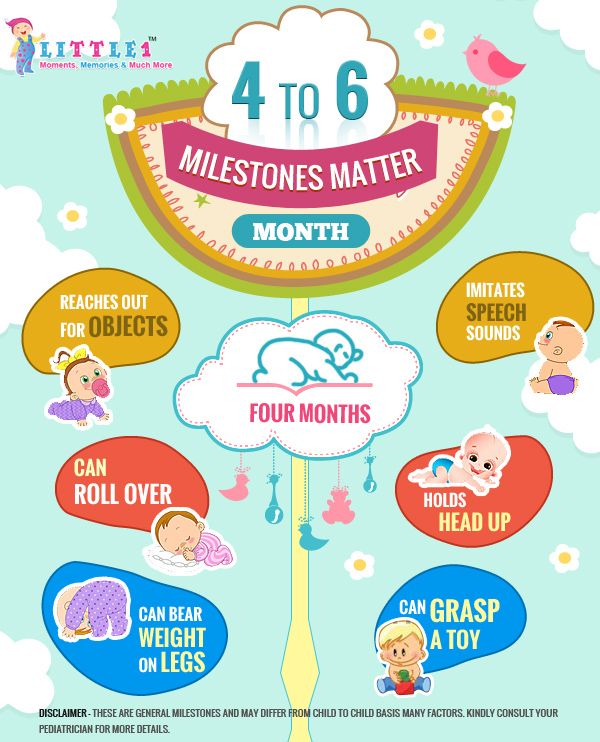 nine0003
nine0003
The kid is frightened if he hears the angry voice of a loved one. His face changes facial expressions, he might even cry!
At this age, the baby easily distinguishes the timbre and strength of sounds, under a beautiful classical music, he is awake and enjoys it, and tired, falls asleep under a gentle lullaby. If you like to dance with your baby, dance! Download carefully child to a slow melody and more quickly to a rhythmic one. So you develop a sense of rhythm in your crumbs through movement. nine0003
At this age, kids get great pleasure from playing with sounds. Completely independent of the mother's speech, children all over the world begin to pronounce first syllables: “ba”, “ma”, “am”, “ta”, etc. Some babies can change tonality and volume of his speech, and even hum whole melodies.
All sounds for the crumbs are alive! He just enjoys them. Sense of speech, each vowel and consonant has certain properties for the child.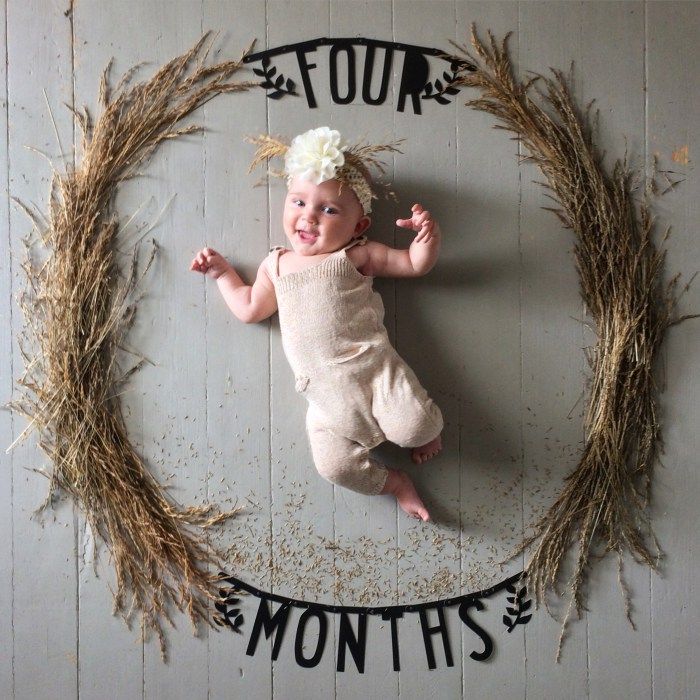 Therefore, kids love to listen to poetry, even those that seem strange to you. nine0245 At this time, the initial development of the eyeball is completed.
Therefore, kids love to listen to poetry, even those that seem strange to you. nine0245 At this time, the initial development of the eyeball is completed.
He examines objects, as if feeling them with his eyes, determining their shape and the size. Such a long and varied visual concentration, his attention to objects, active cooing - all this is evidence of a normal psychophysical development.
The development of vision allows the baby to examine and memorize objects in detail and people. At this age, he begins to distinguish some colors, to catch the difference shapes such as oval, triangle and rectangle. He starts respond to a change in the appearance of a person whom he knows well. Mom put on a new dress, a hat or glasses - all this is interesting for him, he tries everything to consider and study, in a new image, he strives to recognize his own face. nine0003
At 4 months, the baby will already enjoy his reflection in the mirror.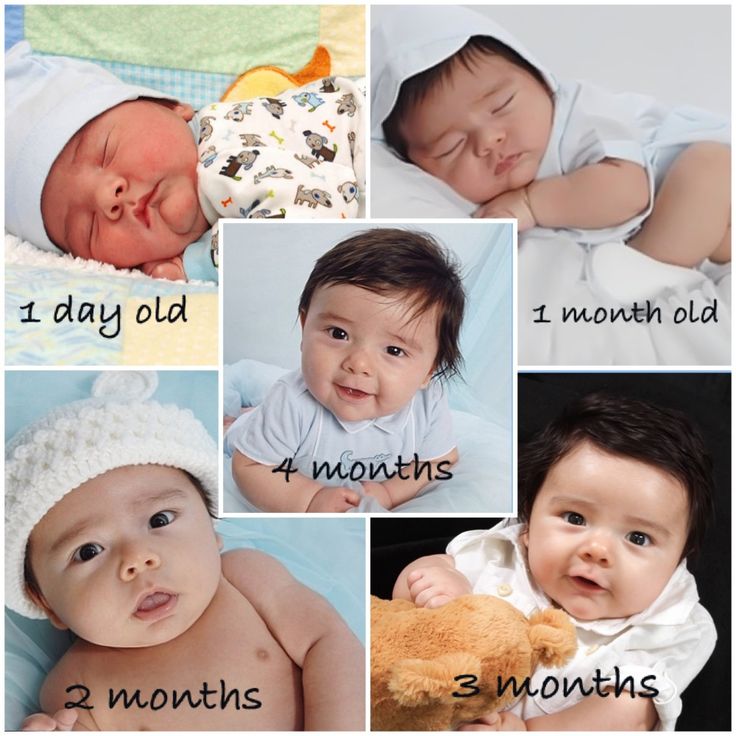 To do this, many toys have a safe mirror. He will greet your "stranger" with a joyful and radiant smile.
To do this, many toys have a safe mirror. He will greet your "stranger" with a joyful and radiant smile.
At the fourth month, the baby is already trying to turn on its side. A little later he can roll over from stomach to back. All these movements are still uncertain, and more like rollovers.
Having come across toys, he examines them, seeks to grab and touch them. He still does not know how to grab objects on his own, but he keeps the nested rattle in the palm of your hand, firmly enough. nine0003
Any objects that fall into the hands of the baby, be sure to fall into the mouth. for further research. This is a new step in the development of the child! Baby strive explore the world with your sensitive mouth. This is how he gains experience. tactile sensations…
During feeding, the baby skillfully grabs and holds the breast with his hands mother or bottle.
The kid already knows how to perceive tactilely various materials and objects.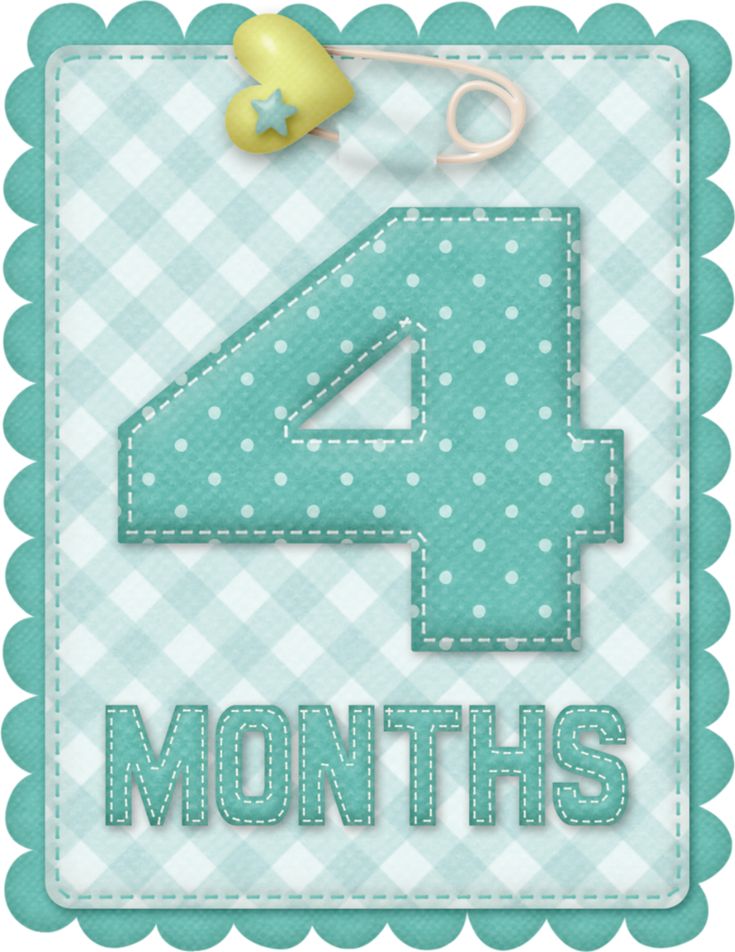
 30
30 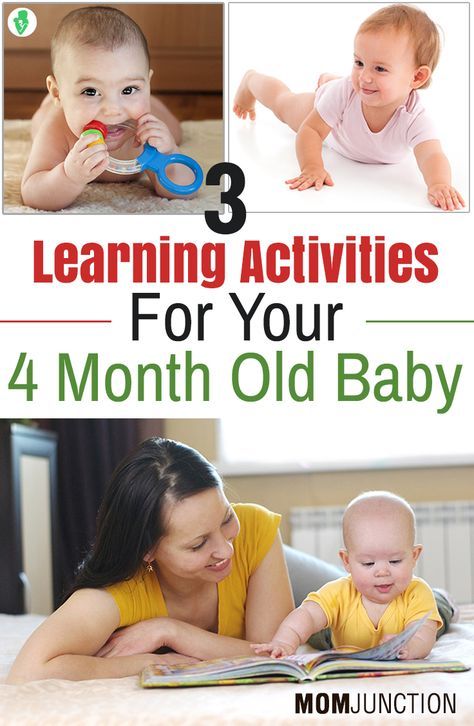 00
00 


